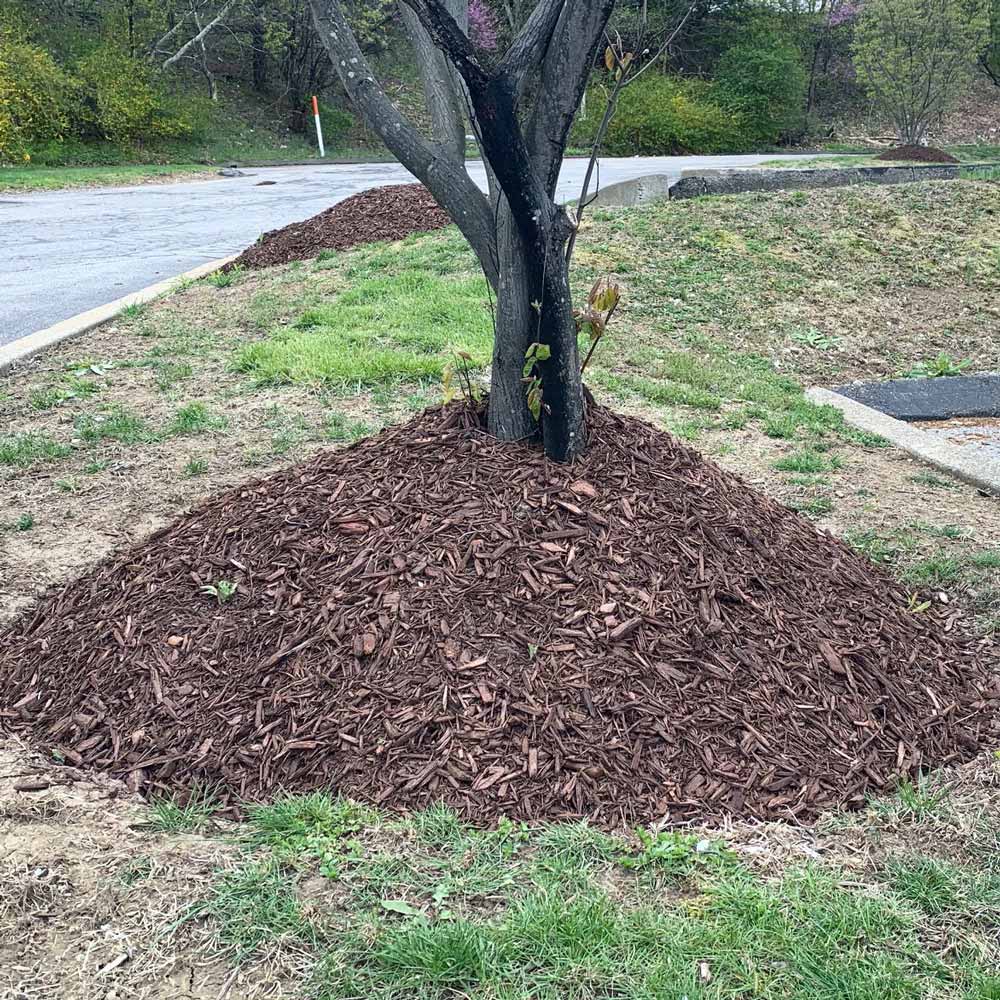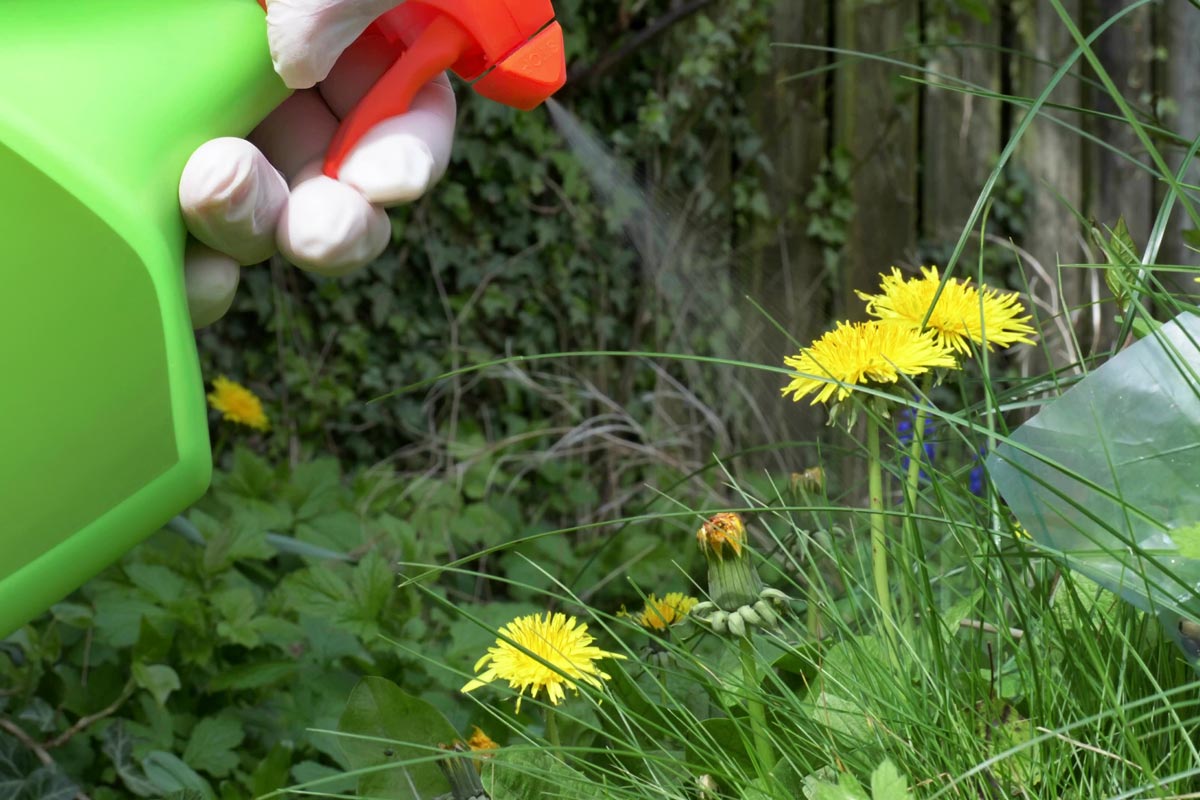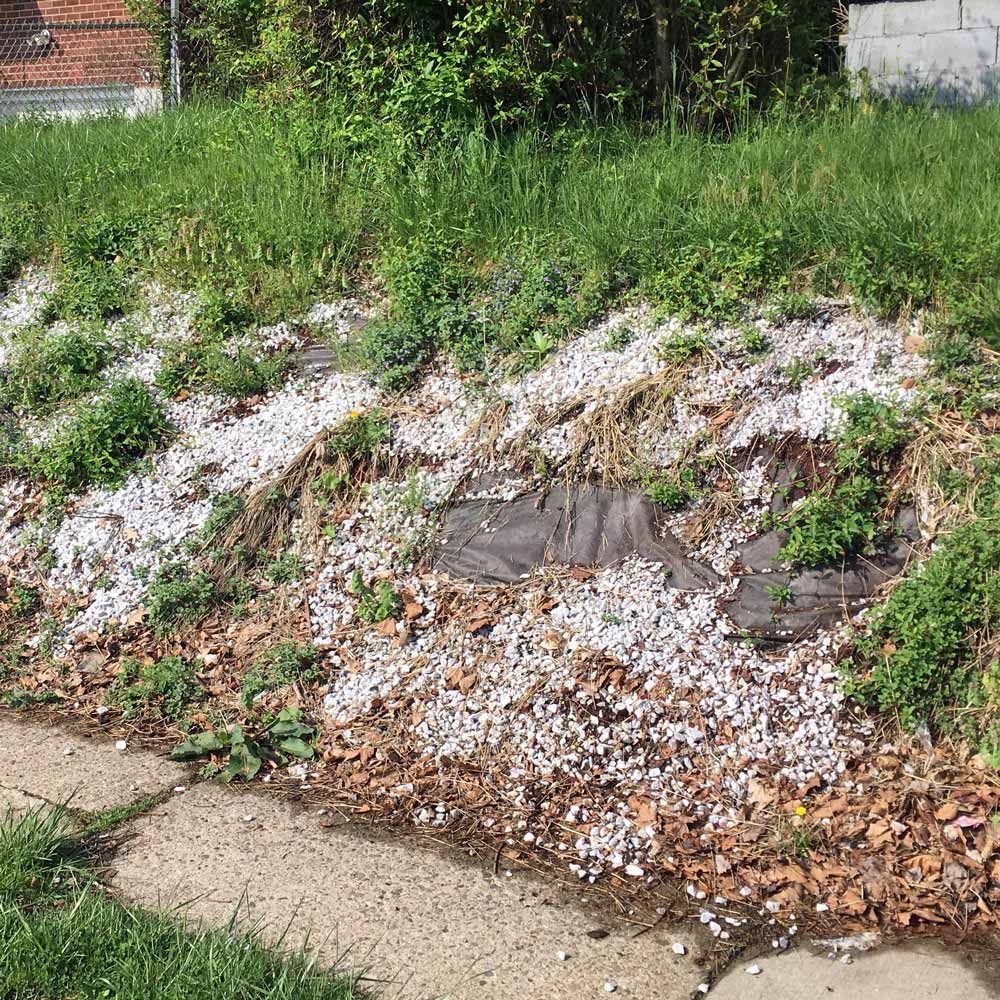8 Common Garden Weed Mistakes
Here’s a look at eight common weeding mistakes that gardeners make with solutions to reduce the weeds in your garden and save you time.
Sometimes in the zeal to win the battle with weeds, gardeners end up inadvertently harming their lawns and plants.
Without due care, some of the tactics and techniques that stop weeds can spill over into stunting or even killing off-target growth.
Four common scenarios:

Mulch has been mounded up against the trunk of this tree to create a "mulch volcano." George Wiegel
Some mulch is a good thing. In addition to blocking weeds, a soil covering of two to three inches of shredded bark, wood chips, or pine needles slows moisture loss from the soil, moderates swings in soil temperature, and adds nutrition as the organic matter breaks down.
The problem is when gardeners pack on too much. That starts to interfere with oxygen moving into the soil and soaks up rain before it ever has a chance to reach the plant roots.
Particularly damaging is when gardeners pack a thick layer of mulch around trees, including several inches or more up the tree’s trunk.
This cone of destruction is commonly called a “mulch volcano” because of its shape.
A mulch volcano is damaging because it encourages bark rot and the growth of shallow roots that can both dry out quickly in the above-ground mulch layer and girdle a tree to death by growing in ever-tightening circle around the tree’s base.
Packing mulch against the trunk also gives cover to insects and rodents that might feed on the bark.
If you have a little too much mulch, pull it a few inches back from the trunk and cultivate the rest to break up matting and allow improved air exchange and drainage. Don’t add more until the layer breaks down to less than three inches.
If you have a lot too much mulch, pull it back from the trunk, remove the excess farther out to a level of three inches, and move the rest to other areas of the yard that need more mulch. Or pile it for later use.

Take extra care to read the label and avoid spraying plants when using weed killers. Yevtony / iStock / Getty Images Plus
Don’t underestimate how far off-target a spray of herbicide can go.
Just because you can’t see it doesn’t mean enough fine mist hasn’t blown onto a neighboring plant to kill it or harm it along with the weed you were targeting.
Spraying on windy days carries the spray drift even farther.
To head off drift, place a barrier between the weed and other plants before you spray. A sheet of cardboard or a wide board work well.
Or resort to hand-pulling in places where weeds and desired plants are growing near one another.
Herbicide sprays drifting onto the trunks of trees also have been implicated in causing bark splits, which can open a tree to disease.
Using the right herbicide in the right setting in the right amount can be a very effective way to control weeds.
However, one of the most common miscues is using the wrong type of herbicide. Many a gardener has been surprised by brown patches in their lawn a day or two after spraying what they thought was a lawn weed-killer. Instead, they mistakenly used a non-selective herbicide such as the widely available glyphosate, which kills most anything green and growing – including turfgrass.
The correct product in that situation is a selective herbicide that’s formulated to kill broad-leaf weeds in the lawn without harming the grass.
The way to head off such mistakes is to read labels carefully to be sure the product is labeled for the intended use. The product label includes

Here’s what a bank that was covered with landscape fabric and stone looks like several years down the road. George Weigel
Laying a sheet of black plastic or woven polymer fabric called “geotextile” or “landscape fabric” over the soil is another way to block weeds. To head off degrading in the sun and to soften the look, plastic or fabric sheeting is almost always covered by mulch or stone. Gardeners often believe this is a permanent fix for their weed troubles.
While this covered sheeting can work for a few years, eventually the mulch breaks down or dirt and other organic debris blows into the mulch or stone. That gives weed seeds enough soil to germinate, leading to weeds growing on top of the fabric. The roots of perennials weeds can penetrate fabric. Eventually, the worn out, weedy fabric and mulch or stone covering it will need to be replaced.
Additionally, landscape fabric and plastic sheeting can inhibit oxygen from reaching plant roots, which can lead to stunted growth and surface-rooting. Plastic is most harmful because it doesn’t have the microscopic holes that landscape fabric does. So, while fabrics can be useful in some settings (i.e. in paths, farm fields, and annual-flower or vegetable gardens outfitted with drip irrigation), they’re not a good idea in permanent landscape beds with trees, shrubs and perennials, says Washington State Extension educator Dr. Linda Chalker-Scott, author of “The Informed Gardener” and “The Informed Gardener Blooms Again.”
She adds that “landscape plant roots can also colonize fabrics, and they are damaged when the fabrics are removed.”
A better solution for landscape beds is to combine mulch or stone with a weed preventer. Granular weed preventers such as Preen can be applied on top of mulched, planted beds to further stop new weeds before they have a chance to sprout and grow. Two to three applications per year can give season-long protection, depending on your climate and which type of Preen you use.
Preen offers several options for controlling weeds in garden and landscape beds.
Preen Garden Weed Preventer blocks weed seeds in your garden for up to 3 months and is labeled for use around 200 established flowers, vegetables, trees, and shrubs.
Preen Extended Control Weed Preventer provides protection from new weeds for up to 6 months and is labeled for use around 600 plants in perennial flower beds; around groundcovers, trees, and shrubs; and in xeriscape settings and rock gardens.
Preen Garden Weed Preventer Plus Plant Food blocks weed seeds from sprouting in your garden for up to 3 months, and gives your plants a boost of plant food for beautiful, radiant blooms.
Preen Natural Vegetable Garden Weed Preventer is a natural way to keep weeds from sprouting in your vegetable garden. Providing 4-6 weeks of weed protection, Preen Natural can be used around any plant, including established vegetables, herbs, and fruits.
After pulling existing weeds, apply Preen around plants, work it in with a rake and then water it in to activate and create a weed control barrier just beneath the surface that stops new weeds from growing.